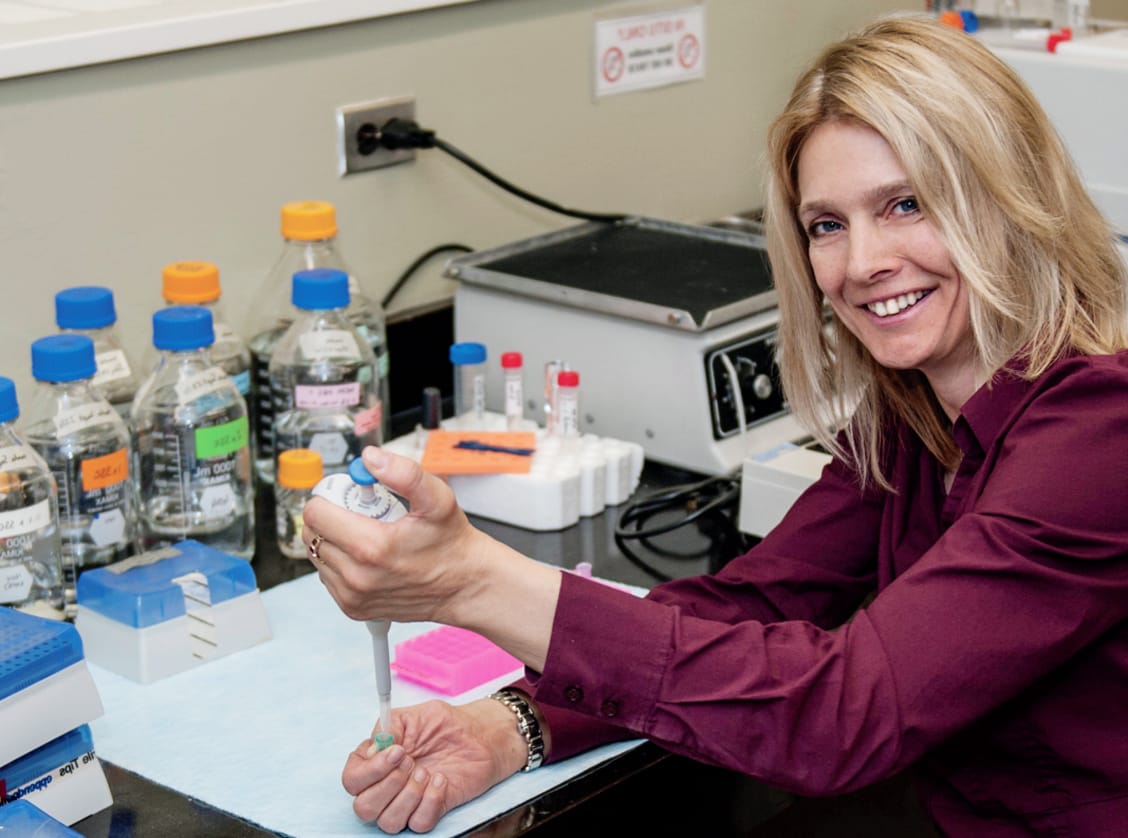
If you ask most Canadians with SCI, along with others who rely on an intermittent catheter for one of the most basic of human needs, they’ll tell you that funding for them in most parts of Canada is unfair and short-sighted. But it’s safe to say that the Canadian public, which takes for granted the privilege of peeing for free, has been in the dark when it comes to struggles endured by those who need to use catheters daily.
That may be changing. In late March, CBC News published and aired a comprehensive story about Chris Stigas, a Toronto man with quadriplegia who really took one for the team. He revealed deeply personal aspects of his life to veteran CBC reporter Rosa Marchitelli, explaining how he can’t afford the steep out-of-pocket costs for his catheters and collection bags, and so reuses them despite the fact that doing so puts his health in jeopardy.
The segment, part of the popular CBC News Go Public series, appeared on The National and was viewed (and read online) by audiences across Canada. The story pulled no punches and clearly spelled out the dilemma faced by Stigas and others with SCI—struggles to pay for safe supplies, intentional dehydration to avoid peeing, using cheap and unsafe equipment, and attempting to disinfect supplies over and over, all of which dramatically raise the threat of urinary tract infections, or UTIs.
This is likely the first time this issue has been publicized so widely to the Canadian public. We believe it won’t be the last time. Through a combination of research and advocacy, we think this issue is gaining traction, and that Health Canada and their provincial counterparts are beginning to take notice.

NOT SO UNIVERSAL COVERAGE
The crux of the problem is this: SCI and its secondary complications, including urinary incontinence, are health issues and clearly fall under the domain of the Canada Health Act and Medicare, Canada’s publicly-funded health care system. The Government of Canada, on its website, asserts that the basic premise of our health care system is “universal coverage for medically necessary health care services provided on the basis of need, rather than the ability to pay.” But when it comes to funding catheters and other urinary supplies, coverage is anything but universal across Canada.
While the overarching responsibility for our universal health care belongs to the federal government, health care is administered by provincial and territorial governments. And they are certainly not on the same page when it comes to catheters and urinary supplies.
Just one province in Canada has close to ideal coverage, and that’s Saskatchewan (coincidentally, the home of our universal health care system). There, medical supply companies provide people with SCI with the high-quality supplies they need, and bill the government directly.
In other provinces, it’s a convoluted mishmash of coverage. In Ontario and Manitoba, for example, only people relying on social assistance have coverage available. The situation is marginally better in other provinces such as Alberta and New Brunswick.
The situation here in BC is among the worst in Canada. If you were injured on the job, you get a free pass: Worksafe BC will cover all costs for urinary supplies. Other possible funding options include Veterans Affairs, ICBC, and private insurance. If you’re in a low income category or receiving social assistance, you may be eligible for some limited support. However, as many readers know, far too many people who need catheters here in BC have to foot some or all of the bill themselves. In other words, they have to shoulder the financial burden of what is a crippling fee to pee.
RESEARCH TO THE RESCUE
One likely reason that this situation has been allowed to persist for so long is that these differences in coverage from province to province are poorly understood. At the University of Manitoba, Dr. Kris Cowley is leading a project that she hopes will shine a spotlight on the problem.

“We’re working on a policy-based and key informant interview-based assessment of the most important SCI-specific essential health needs across the country,” says Cowley, who is Director of the Spinal Cord Research Centre at the University of Manitoba and the Canada Research Chair in Function and Health After Spinal Cord Injury. “In addition to urinary supplies and coverage, we’re also trying to understand the differences between provincial coverage for neurogenic bowel supplies, wheelchairs, and home care for activities of daily living. We’ve done the policy review piece and the interviews, and have completed a preliminary report, which we’re distributing for feedback to SCI BC and its counterparts in other provinces.”
Cowley, who brings the added experience of living with an SCI to her positions, says the bottom line is that there are clearly glaring discrepancies in coverage across the country—but a complete and accurate understanding of them is necessary in order to begin the process of pressing for change.
We’ll get back to Cowley’s research later in the story, but it’s also important to note that a wealth of research concludes that single-use, hydrophilic (pre-lubricated) catheters are by far the safest option available, providing they are used as prescribed—in other words, just once, and never reused. In 2020, when the Clean Intermittent Urethral Catheterization in Adults—Canadian Best Practice Recommendations for Nurses was published, the authors (Nurses Specialized in Wound, Ostomy and Continence Canada; Canadian Nurse Continence Advisors; Urology Nurses of Canada; and Infection Prevention and Control Canada) considered this wealth of research and concluded, “A single-use, pre-lubricated catheter should be recommended for patients, especially those with repeated, symptomatic UTIs.”
In Canada, no researcher has done more to promote the use of single-use, pre-lubricated catheters as a gold standard than ICORD Principal Investigator Dr. Andrei Krassioukov. In 2014, when the highly-respected journal Cochrane Reviews concluded that there was no disadvantage to re-using catheters, Krassioukov took exception. While working at the 2012 summer Paralympics in London, Krassioukov had observed that athletes who used catheters only once experienced three to four times fewer UTIs than those who reused catheters. Based on that and his own extensive clinical experience as a physiatrist, he assembled a team of international experts that reexamined the evidence and concluded that Cochrane was in error. Cochrane agreed—and subsequently retracted its analysis.
The Krassioukov lab continues its work in this area. In fact, it just completed a case study series to assess the damage to catheters after just three days of use. Not surprisingly, catheters showed damage and bacterial buildup, despite a relatively short amount of time and efforts to sterilize them after each use.

CATHETER COST VS. SAVINGS
To summarize, single-use hydrophilic catheters are being increasingly accepted by clinicians as the gold standard, here in Canada and around the world. In France, for example, the health care system pays for all citizen’s to use single use catheters—officials did the modelling and math and concluded that it was cheaper to implement and fund a single use catheter policy rather than pay the costs of not doing so. So why aren’t provincial health ministries in Canada taking steps to recognize this—and fund their use?
The obvious answer is cost. Most people who use a catheter do so about five to six times a day. Single use catheters range from $5 to $30. So it’s easy to see how governments are reluctant to add to already overburdened provincial health budgets. But their reluctance is shifting an incredibly unfair burden onto people with SCI and other conditions, many of whom are economically disadvantaged by virtue of their disability. The inequities here should be enough to prompt change. But there’s a more powerful argument, which is simply this: reusing catheters leads to far more UTIs, and UTIs are incredibly expensive to treat—particularly more complex, recurring UTIs which require hospitalization and which people with SCI are prone to.
The exact cost of treating these types of UTIs is hard to pinpoint; one study we found was conducted in 20 hospitals in eight countries (Bulgaria, Greece, Hungary, Israel, Italy, Romania, Spain and Turkey) and involved 644 patients. The mean treatment cost per case was €5700, or roughly $7,700. Even treating less complex cases of UTIs can cost as much as $1,000. But this is probably too simplistic when it comes to UTIs in people with SCI, because they are often triggers for even more serious health complications. Consider, for example, that UTIs are one of the most common triggers of serious bouts of autonomic dysreflexia or AD, which can be life-threatening and require sometimes lengthy and costly hospital stays. As well, there’s a well-researched correlation between recurring UTIs and the onset of bladder cancer.
There is no conclusive data to show how much money could be saved by our provincial health care systems if they were all to universally adopt a preventative approach of funding single-use, pre-lubricated catheters to everyone who needs them. But at the very least, it seems likely that this approach would significantly offset the cost, and perhaps even result in a break even of costs.
MAINTAINING MOMENTUM
Our hope is that increased public awareness, combined with more research that further underscores the dangers of reusing catheters and other urinary supplies, presents an opportunity for change. Dr. Cowley’s study at the University of Manitoba, which will bring clarity to the disparities between provinces when it comes to funding this essential health equipment, may be the catalyst we need to begin the conversation in earnest.
“Education will be key to levelling what currently is a very uneven playing field across Canada,” says SCI BC Executive Director Chris McBride, who, as Chair of SCI Canada’s Executive Directors Council, is working with SCI BC’s counterparts in other provinces to shed more light on and bring resolution to the situation. “All provincial members of the SCI Canada federation are pleased to be working with Dr. Cowley’s team to ensure the final report is accurate and comprehensive. And when it’s completed later this year, we look forward to helping ensure it gets the publicity and consideration it deserves, particularly from the federal and provincial governments.”
Additionally, says McBride, SCI Canada and its members will collaborate with other organizations representing other users of urinary incontinence supplies, with the goal of furthering momentum.
“People with SCI are just one group of people whose basic health care needs are not being met by the current situation,” he says. “For example, it’s been estimated that a quarter of people who have MS rely on catheters. So we’ll be exploring ways that we can share the workload of publicizing and distributing the completed report—and working with our health care authorities to bring some fairness to the existing situation.”
Naturally, we’ll be bringing readers more news on the report and our efforts to level the playing field in the months ahead—in fact, your voices and concerns may be vital at some point in the process, as Ontario’s Chris Stigas has made abundantly clear.
This article was originally published in the Summer 2022 issue of The Spin. Read more stories from this issue, including:
- Stimulating Pleasure
- SCI BC’s Adpative Cyling Program
- Shoulder Surgery
And more!




